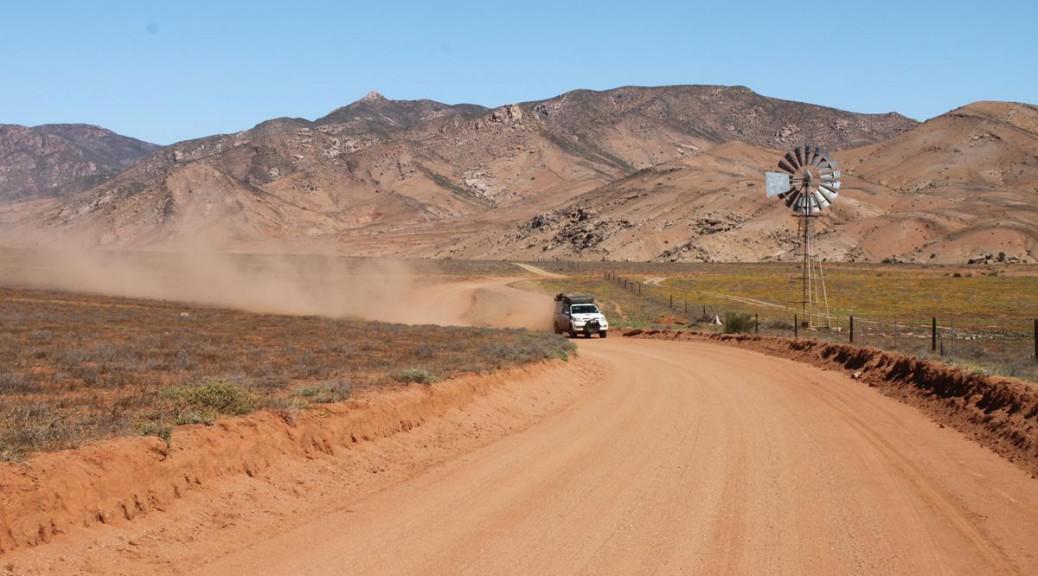If you plan on doing some overlanding, there are essential things that you should add to your vehicle to ensure that you are self-sufficient and enjoy your travelling.
Water tank
Water tanks make it possible to get rid of the scores of bottles and containers you would otherwise have carried for extended expeditions or areas where the tap water is not reliable. They also make it possible to carry more water for longer distances between replenishment stops.
Like long-range fuel tanks, chassis-mounted water tanks are better for the vehicle’s centre of gravity than containers stored on the roof-rack or up high inside the vehicle. It is advisable to get a simple water tank that is accessible and can be easily repaired if it starts leaking during a trip. Avoid plastic tanks and pipes if you are fussy about the taste.
Awning
Awnings provide shelter against sun and rain, but to do this they need to be large enough as these don’t always come from directly above. They can make an exposed campsite pleasant – or at least bearable – and can also provide impromptu protection against rain and sun for roadside stops like lunch breaks or even repairs. Go for an awning that is easy to set up and stow away as some can be bulky and heavy. If you fit one with a metal cover it won’t get damaged by branches. If an awning protrudes from the front of the vehicle, branches can snag between the awning and roof-rack or the roof of the car so you should consider fitting branch deflector cables.
Packing system
The advantage of having a fixed packing system in the back of your overland vehicle is that it is easier and quicker to get to out-of-reach items without unpacking other luggage. Having to squeeze in between a fridge and freezer to reach your groceries or clothes can really become quite tiresome, therefore having some kind of drawer system can make life much easier and camping more enjoyable. Speak to experienced travellers and see our blog article on packing systems so that you don’t have to deprive yourself of a coffee stop next to the road simply because it is too much of a schlep to reach the coffee.
Roof-rack
Roof-racks make it possible to carry awkward, dirty or dangerous items outside the vehicle. People typically use them to transport items like camping equipment, firewood or gas cylinders. As roof-racks also have disadvantages, you should talk to experienced travellers and read up before you rush out to buy yourself one. If you fit one, make sure you know its clearance for garage parking.
Inverter
A 220 V inverter makes it unnecessary to take along a 12 V power supply for each of your electronic accessories – simply plug their 220 V adapters into the inverter and charge your electronic equipment while you drive. If you have a solar panel you can also use the inverter while you are stationary.
Quality and reliability vary widely; buy the best so that you are not left without power. Make sure your inverter is easily accessible for daily operation, securely mounted, protected against dust and has enough ventilation to prevent heat build-up and allow circulation, especially around any internal cooling fan.
Solar panel
Most modern day campers travel with a fridge/freezer and have a number of electronic devices that need to be charged regularly. If you have an effective dual battery system and an inverter it is no problem to charge any of these while your vehicle is running, or at a camp with an electricity point. Your problem starts when you are out in the bush for longer than two days. That is when you need a solar panel. Read our blog article on solar panels.
Dual battery system
With a dual battery system, your mobile fridge/freezer can run off its own dedicated battery and will not drain the vehicle’s starter battery. Other 12 V accessories like camp lights, inverters, electrical compressors, etc. can also be moved to the auxiliary battery.
Although dual battery systems are quite simple in operation, they do add to the complexity of your vehicle’s electrical system. Conventional systems need to have the auxiliary battery close to the starter battery to prevent cable power loss. All cable runs should be of the right guage to prevent current loss and be fuse protected. More advanced systems are available that provide the convenience of having the batteries further apart, but they cost more and cannot charge the auxiliary battery as quickly as conventional systems. Make sure that your second battery is secured properly.
You should seriously consider buying a deep cycle battery as your second battery. Although they are more expensive, they will last longer and are more reliable than semi-deep cycle batteries.
Long-range fuel tank
A long-range tank enables your vehicle to carry more fuel and travel further before refuelling. Normally being fitted underneath the vehicle, long-range fuel tanks can actually improve a vehicle’s centre of gravity, especially compared to jerry cans stored on the roof-rack.
Get a long-range tank of common construction material that any competent welder could repair if need be during your trip. Try to avoid a fuel transfer pump, but if used, purchase a spare and make sure you know how to connect it. Have the tank fitted to your vehicle some time before leaving on your trip to ensure through normal daily use that there are no leaks or problems with the installation and check that all the hoses are of fuel resistant grade material.


Most essential in order of importance: dual battery system, roof rack, long range fuel tank
Good tips for travelers staying in Southern Africa. For Europeans some expenses are a bit steep for incidental use.
Thanks.